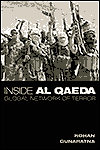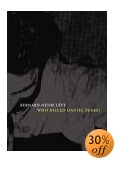|
| Home | About Kashmir Herald | |
Volume 3, No. 12 - June 2004 |
|
| Featured Article |
|
|
|
J&K: Democracy Without Freedom Praveen Swami Elections can be fair, it would seem, and at once profoundly unfree. Voters in the small village of Mirhama queuing up to vote on the morning of May 5 found a Hizb-ul-Mujaheddin (HM) poster pasted on the wall alongside the polling station. "The Hizb-ul-Mujaheddin considers it its primary purpose to punish those who have aided this election," it read. "Such people should not confuse our benevolence with weakness. They should know the Mujaheddin have a programme in place which will make the Indian rulers quake." "We want to vote," said Manzoor Ahmad, "but we have to answer to the Mujaheddin tonight, when none of these soldiers will be around. So, some of the people in our village asked the soldiers to coral us to the polling booth." Mohammad Rafiq was more blunt. "The only safe voter tonight," he said, "is the one who has a couple of lathi (baton) blows to show along with the ink on his finger." Several issues arising from the just-concluded Lok Sabha (Lower House of Parliament) elections in Jammu and Kashmir (J&K) need clear-eyed examination. First, what do the election results in fact tell us? Has there been, as several media commentators have claimed, a revival of the National Conference (NC)? And what do voting patterns in J&K mean for the future of political life in the State? As important, though, the results provide a prism through which the working of terrorism in the State may be understood. The wages of a security policy which protects the state but not citizens need to be examined, and solutions considered. Some within the NC have sought to represent the two Lok Sabha seats they have won in the Valley, to the single one taken by the ruling People's Democratic Party (PDP), as the first signs of a renaissance. The NC had sought, in the course of the election campaign, to appropriate several issues traditionally projected by Islamists, and elements of the PDP: criticism of alleged atrocities by Indian forces, demands for dialogue with terrorist groups, including the HM, and claims that the Union Government was hostile to Muslims at large. At one stage, former Chief Minister Farooq Abdullah had even threatened to revive a movement for a plebiscite in J&K, and had refused to attend the marriage of his daughter to a Hindu. Two seats notwithstanding, the rightward lurch has done the NC little good: notably, the party would have lost the Baramulla seat by a wide margin had the PDP contested it along with its coalition ally, the Congress. Its share of votes polled in the Kashmir Valley has increased only marginally, from 34.9 per cent in the decisive 2002 Assembly Elections to 38.4 per cent now. Had this been an Assembly election, the NC would have won 21 seats in the Valley, up from 18 in 2002 However, this gain needs to be read in the context of an even sharper rise in support for the PDP-Congress alliance. Where the two parties together picked up 40.7 per cent of the Valley vote in 2002, they have now won 48.5 per cent of the vote. Of this, the Congress share is only 9.2 per cent - but through its 'friendly' contest with the PDP in Baramulla, it has proved its coalition ally will loose ground through Kashmir unless it concedes some space to its junior partner. Both will have to work together, or perish alone. As such, the election results have also shown no party can claim to speak for all the people of the Valley, a proposition underlined by the fact that the overwhelming bulk of PDP assembly segment wins, 13 of 22, were concentrated in south Kashmir, while the overwhelming majority for the NC, 13 of 21, came from Srinagar. In a curious inversion of history, it would seem, the National Conference is emerging as the party of the city, and the PDP occupying its position as the party of the peasantry. Close analysis of the results in Jammu province throws up similar surprises. Although the Congress has won both Lok Sabha seats from Jammu, its victory masks a revival of the Bharatiya Janata Party's (BJP) fortunes. Where the BJP won just one Assembly seat in 2002, it has now taken 15 segments, ten from Jammu city and its surrounding border areas. The Congress has also raised its share of the segment-cake, from 15 in 2002 to 20 now. Both parties, together, seemed to have squeezed out smaller players, like the Jammu Kashmir Panthers Party, which could win just a single seat this time around - a decisive repudiation of its hostile regional-chauvinist stance against the Congress-PDP alliance, in which it is a partner. Here again, the National Conference's new-found efforts to appropriate Islamist causes cost it not a little. Its biggest reverses came in the form of a wholesale desertion of its traditional supporters among the Gujjar tribe in the districts of Rajouri and Poonch. Gujjar leaders had been protesting against the PDP's advocacy of granting reservations for the upper castes, Hindu and Muslim, residing in the mountains. Instead of acknowledging these concerns, the NC put up a Rajput Muslim candidate, and paid the price. In 2002, the NC won nine seats in Jammu; now it would pick up a single segment. The lessons? The transfiguration of politics in J&K that began in 2002 is proceeding apace. Any of the two main actors in Kashmir must ally with one of the two main actors from Jammu to hold power. In a rational world, this would lead to alliances which could defuse regional tensions, and enable dialogue and reconciliation. It could, however, also lead to calls to sunder the State on its ethnic-communal lines once and for all: something which both underestimates the cultural diversity in the State, and which would have calamitous repercussions for Hindu-Muslim relations across India. All of this, of course, assumes that the elections in J&K were fought in normal circumstances, which they weren't. The Kashmir Valley results contain within them an ugly subtext: the use of terrorist groups to facilitate democratic victory. Consider, for example, the case of southern Kashmir. Half of the PDP's votes came from high-turnout segments, notably Dooru, Devsar, Noorabad, Pahlgam and Kokernag. In all these areas, the PDP is strong - and so is the Hizb-ul-Mujaheddin. Yet, the HM focussed its anti-election campaign - comprising attacks on political workers and posters warning citizens with reprisals if they voted - in areas where the NC was strong. The All Parties Hurriyat Conference's (APHC's) rival factions also concentrated their boycott campaign in NC dominated areas. The end result? The PDP won massive leads in its segments, while its opponents' supporters bunkered down at home on election day. What the election results do show is that the PDP's relationship with the HM, troubled as it might be, has paid it ground-level dividends. Anantnag Member of Parliament (MP) Mehbooba Mufti - Chief Minister Mufti Mohammad Sayeed's daughter - and HM 'central division commander' Abdul Rashid Pir, were the architects of this alliance. In 2001, Pir crossed the Line of Control along with the then-HM 'supreme commander', Ghulam Hassan Khan. His introduction to the Valley was part of a large-scale reshuffle within the HM, intended to marginalise the pro-dialogue rebel Abdul Majid Dar. Pir's main task was the construction a new pool of overground sympathisers, to compensate for diminishing support from the ranks of the HM's traditional political patron, the Jamaat-e-Islami (JeI), which had backed Dar. Pir successfully built a wide network of contacts with grass-roots PDP cadre as well as its top leadership, contacts that were crucial to the PDP's thumping victory in the 2002 Assembly Elections. The relationship, however, rapidly soured. One key cause was the March 2003 elimination of the 'supreme commander' Ghulam Hassan Khan, who operated under the code-name Engineer Zamaan. The HM believed their 'supreme commander' was eliminated several hours after his arrest, with PDP consent. Whatever the truth, the HM responded by initiating a full-scale assault on the PDP. Pir is believed to have ordered the assassination of several PDP cadre, including one of Sayeed's relatives, in April 2003, and the subsequent bombing of the Parimpora Fruit Market in Srinagar two months later. Sources, however, said he subsequently acceded to requests by a top PDP leader for a peace meeting, along with the HM's 'southern division commander', Arif Khan. The meeting, held in the south Kashmir village of Chattergul, ended with the top PDP leader promising to do all that was possible to scale back offensive operations against the HM. Nothing of the kind could, in fact, be secured by the PDP, although follow-up meetings were held in the Pahalgam area. In January this year, the HM lost Ghulam Rasool Khan's replacement as supreme commander, Ghulam Rasool Dar. Soon after, Indian troops shot dead Arif Khan as well. Pir was now nominated to hold the job. While many within the HM wanted to end the relationship with the PDP, Pir prevailed - with the support of several influential south Kashmir figures, including Mohammad Abid, the HM's new 'southern division commander', the Nagbal 'area commander', Ashiq Shah, and Kokernag 'area commander', Shabbir Bahduri. Pir was shot dead by Indian forces acting on Intelligence Bureau (IB) information on May 6 - hours after the end of polling in the penultimate phase of elections in J&K. He is likely to be replaced by Amir Khan, a member of the HM's Pakistan-based Central Jihad Council who also uses the nom de guerre Khalid Saifullah. Although some HM commanders, notably Bandipora's Bashir Ahmad Pir, want a change in line on the PDP, the organisation is likely to value the protection PDP rule gives its overground apparatus, in the name of protecting 'innocents and human rights'. In material terms, many south Kashmir commanders have also secured significant financial gains, notably in the form of construction contracts granted to immediate relatives. Politically, the electoral dividends of the PDP-HM relationship are obvious: and have led the NC into a competitive effort to win terrorist favour. Indian armed forces have focussed their election efforts on protecting candidates and their workers - not on actually making sure citizens are safe to exercise their political options. Put simply, politicians are now relatively safe, but not the people. Election 2004 was considerably safer than that seen in 2002. Just 17 political workers were killed in the campaign - from February to May 7 - a figure that stands in stark contrast to the 99 lost in 2002. Yet, the results show that organisations like the HM continue to wield considerable influence over civil society. The sad fact is that terrorists, not the Indian state, rule J&K by night. The use of killings as an index with which to gauge security is profoundly misleading. Two reforms seem imperative. First, the Indian Army and Border Security Force (BSF) need to get out of their suicide-attack shell. Sharp increases in commitments to perimeter security have brought a near end to night operations, except those generated on specific information. Knowing that troops will rarely move out of their camps at night, terrorists take shelter in nearby villages, recruit their residents, and target those perceived as pro-India. Significantly, kidnappings are the one kind of terrorist crime that increased between 2002 and 2003, when they reached levels not seen since 1997. No prizes are available for guessing who is being targeted. Some within the Army are sensitive to the need for physical domination of villages at night, a fact made clear by the creation of new, locally-raised battalions. These initiatives, though, need to be institutionalised. Personnel also need to be freed from Srinagar, the domination of which has become a reflexive obsession forged during the urban warfare era of the early 1990s. An estimated 16,000 personnel of all forces are now in Srinagar, the vast bulk squandered on static duties and personal protection tasks. Many are simply posted in poorly designed bunkers from which they can see little, as such a curious case of Indian forces providing sitting targets which can be attacked with impunity. Such numbers, however, are simply no longer needed to protect the city, and would be better-used providing security in the countryside. Finally, some of the self-delusion on attrition among terrorist ranks needs to be abandoned. From January to May 13, just 353 terrorists have been shot dead across J&K - figures marginally higher than last year, it is true, but well below the figures recorded in 2001 and 2002. Given that the kills constitute just a tenth of the estimated presence of terrorists in J&K, the lull in cross-border infiltration will do nothing to significantly dent the capabilities of Pakistan's jihadi armies. The fact that attacks on security forces have declined means little. Terrorists, it would seem, have learned the real lesson: that dominating civil society is more important than raids and bombings. It is time Indian forces also did some thinking. Courtesy: South Asia Terrorism Portal |
 |
 |
 |
|
|
Archives
| Privacy Policy |
Copyrights
|
Contact
Us | |
||